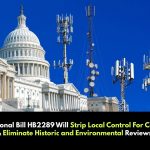
In California’s agricultural heartland, where fields of grapes and strawberries stretch for miles, a sharp, acrid smell often lingers in the air. That smell is sulfur dioxide — a toxic gas formed when elemental sulfur, the most widely used pesticide in the United States, reacts with sunlight and air.
Often promoted as “natural” and approved for organic farming, elemental sulfur is anything but benign. Once applied to crops, it doesn’t just stay in the soil. It sublimates — transforming from a solid to a gas — and oxidizes into sulfur dioxide, a well-documented respiratory irritant and hazardous air pollutant.
This chemical transformation is largely ignored in both public discourse and pesticide regulation. As a result, farmworkers, families, and entire communities are unknowingly exposed to a gas that’s strictly regulated when released from industrial smokestacks — but slips through the cracks when it emerges silently from farm fields.
The Most Used — and Most Overlooked — Pesticide

In 2022 alone, California applied nearly 39 million pounds of elemental sulfur to its fields — more than any other pesticide, synthetic or otherwise. It tops the usage charts year after year.
And yet, sulfur is treated as low-risk. It carries only a “Caution” label. Protective gear requirements are minimal. It’s rarely mentioned in conversations about pesticide drift or environmental health. But the science tells a different story.
Sulfur doesn’t act as a pesticide until it becomes sulfur dioxide — the very same gas listed under California’s Proposition 65 as a reproductive toxicant and by the U.S. Environmental Protection Agency (EPA) as a criteria air pollutant. Exposure is linked to asthma, lung irritation, and risks to fetal development. And unlike many synthetic pesticides, sulfur dioxide has no known safe threshold. Harm has been observed at concentrations below 1 part per million.
So why does elemental sulfur get a regulatory pass? Because it transforms slowly and invisibly. When sulfur dioxide is piped directly into cold storage rooms or factories, strict safety protocols apply. But when it’s released from sunlit fields over the course of days or weeks, it’s treated as harmless — even though the gas is chemically identical.
Invisible Exposure, Real Consequences
A 2017 study by University of California, Berkeley, researchers found that children living near sulfur-treated fields in the Salinas Valley had elevated asthma symptoms, reduced lung function, and increased reliance on rescue medication. In these communities — many of them working-class and Latino — exposure isn’t abstract. It’s a daily, physical reality.
Sulfur dioxide is colorless, odorless at low concentrations, and hard to measure outdoors. That makes it difficult to monitor — and easy to ignore. Yet studies have shown it continues to off-gas from treated plants for up to 10 days after application. At standard agricultural rates, that can mean dozens of pounds of sulfur dioxide per acre released into the air — with no buffer zones required near homes, schools, or worker housing. Even home gardeners can buy elemental sulfur over the counter, unaware of the risks it poses when exposed to sun and air.
A Regulatory Blind Spot

Despite clear evidence, federal and state pesticide regulators have not updated sulfur’s risk classification. Safety data sheets for sulfur often omit any mention of sulfur dioxide. Pesticide labels don’t warn about its formation either. Air monitoring near treated fields is virtually nonexistent.
If a synthetic pesticide posed this kind of chronic airborne risk, we’d expect tighter scrutiny. But because sulfur is considered “natural” and acceptable under organic standards, it escapes meaningful regulation.
This isn’t just a failure of oversight — it’s a form of environmental injustice. The people most affected are often low-income farmworkers and their children, who live and work closest to the source.
A Call for Transparency
This isn’t a call to ban sulfur. Many farmers, particularly organic growers, rely on it. But it is a call for honesty. For transparency. For a science-based update to outdated assumptions.
Workers deserve better protections. Families deserve to know what they’re breathing. And regulators need to stop pretending that “natural” always means “safe.”
Elemental sulfur may be old-fashioned — but the risks it poses are modern and measurable. It’s time our policies caught up.





